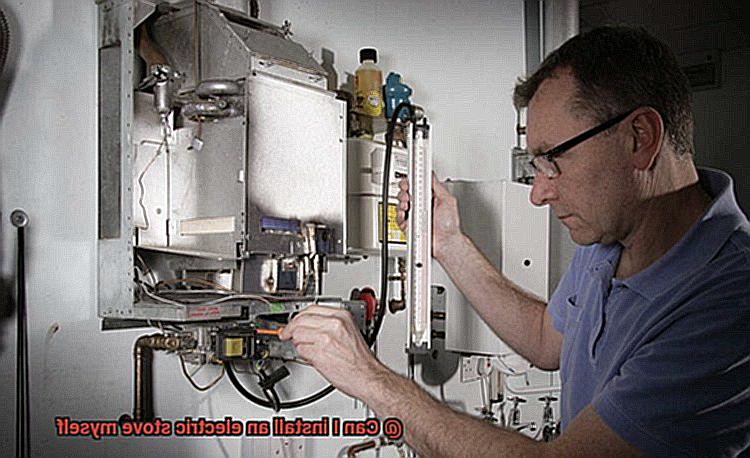Are you tired of your old gas stove and ready to make the switch to an electric one? Electric stoves are not only sleek and stylish, but they’re also incredibly easy to use. But what about installation? Can you do it yourself?
Believe it or not, installing an electric stove is a fairly simple process – if you’re up for the challenge. Before diving in, there are some important considerations to keep in mind.
In this blog post, we’ll guide you through everything you need to know before attempting a DIY installation. From the necessary materials and tools to safety measures that can’t be ignored, we’ll cover it all. By the end of this post, you’ll have a clear understanding of whether or not you’re ready for the task at hand.
So if you’re ready to take on the challenge of upgrading your kitchen with a brand new electric stove, let’s get started.
Contents
What is an Electric Stove?
An electric stove might be the answer. An electric stove is a kitchen appliance that uses electricity to heat up and cook food. It typically consists of a cooking surface, made of materials like ceramic, glass, or coil burners, and one or more heating elements underneath.
Electric stoves come in different types, including freestanding, slide-in, and drop-in models. They are easy to use, efficient, and offer precise temperature control. The cooking surface can vary in size and shape, allowing for versatile cooking options. The heating elements underneath can be of different types and sizes, depending on the model.
One significant advantage of electric stoves is that they do not require a gas line hookup, making them more convenient for some homeowners. Additionally, they are safer to use since there is no open flame. This feature is especially beneficial for households with children or pets. However, they may consume more energy than gas stoves, leading to higher electricity bills.
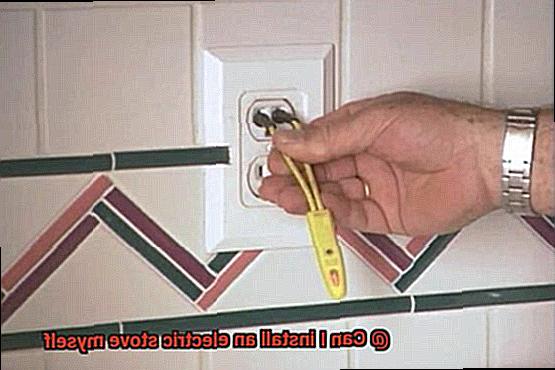
When choosing an electric stove, consider the type of cooking surface you prefer. Ceramic and glass surfaces are sleek and easy to clean, while coil burners are more traditional and durable. Another important factor to consider is the size and number of heating elements you need for your cooking needs.
Before installing an electric stove yourself, it is crucial to follow all manufacturer instructions carefully and check local regulations. Some areas may mandate a licensed electrician to do the job. Additionally, it is essential to ensure that your electrical system can handle the load of the stove by checking your circuit breaker and ensuring that you have the appropriate wiring in place.
Can You Install an Electric Stove Yourself?
Installing an electric stove can be a daunting task, but with the right tools, knowledge, and precautions, it is possible to do it yourself. However, before you embark on this DIY project, it’s essential to consider your level of expertise in electrical wiring and appliance installation. If you’re not confident in your ability to complete this task, it’s recommended that you seek professional help.
Before starting any work, make sure that you have all the necessary tools and equipment on hand. You’ll need a screwdriver, wire stripper, wire nuts, pliers, and a voltage tester. It’s also crucial to have the installation manual that came with your stove and read through it thoroughly.
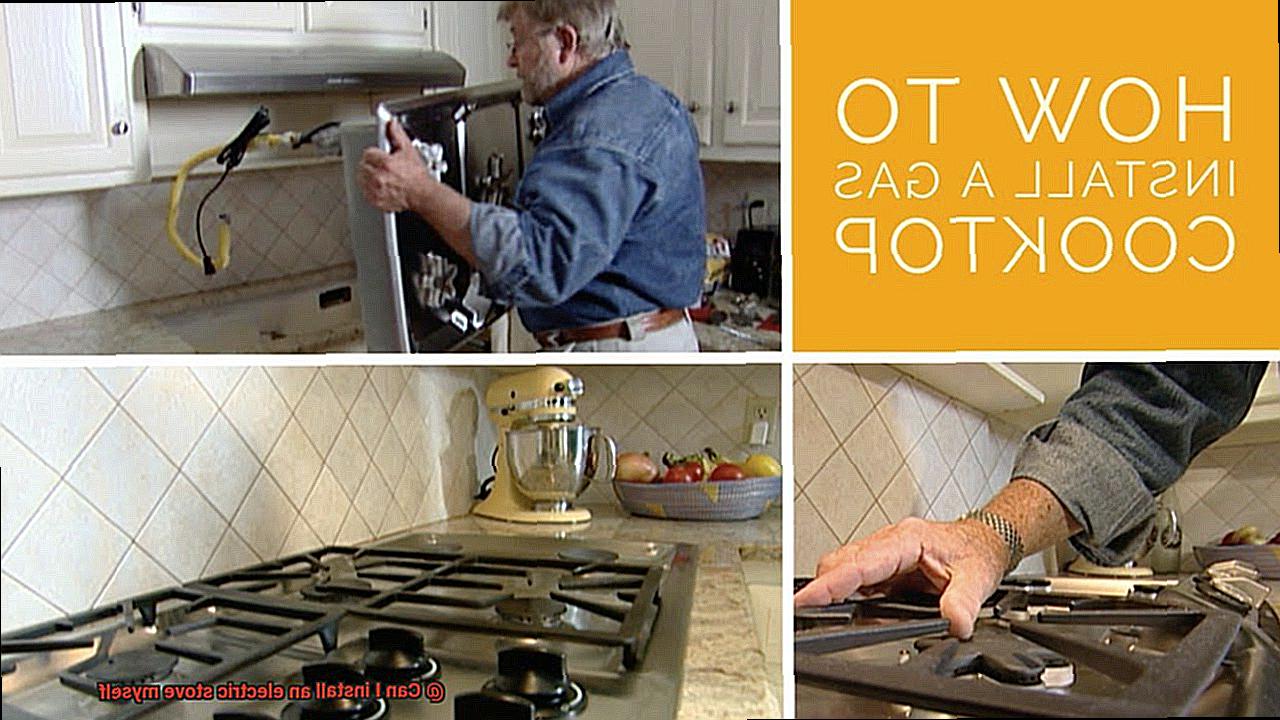
One of the most critical safety precautions when installing an electric stove is to ensure that the power source is turned off. This means turning off the circuit breaker or unplugging the power cord from the outlet. It’s also important to ensure that the wires are correctly grounded to prevent any electrical shocks.
When installing the stove, follow the manufacturer’s instructions carefully. This typically involves connecting the wires from the stove to the corresponding wires in your home’s electrical system. It’s vital to make sure that these connections are secure and tight using wire nuts.
After making all the necessary connections, it’s time to test the stove to ensure that everything is working correctly. Turn on each of the burners and check that they heat up evenly. Test the oven by preheating it and checking that it reaches the desired temperature.
Considerations Before Installing an Electric Stove
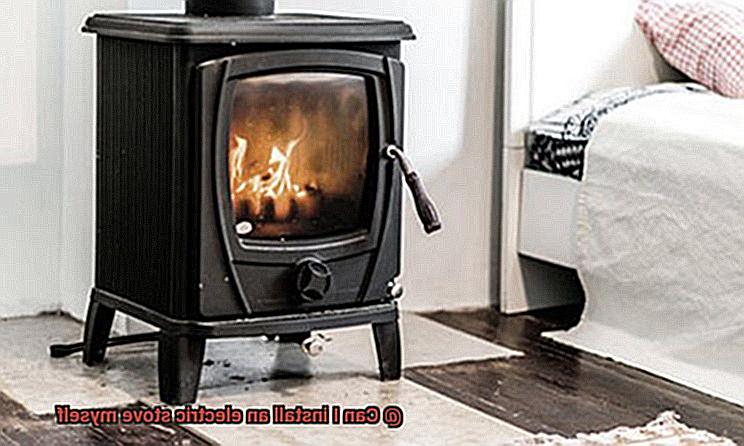
However, before diving into this exciting DIY project, there are some crucial considerations you need to keep in mind. As an expert on the topic, let me guide you through the process and help you avoid any potential pitfalls.
Firstly, your home’s electrical system needs to be able to handle the load required by the stove. This means checking the voltage and amperage of your electrical supply and comparing it to the requirements listed in the stove’s manual. Overloading your electrical system can lead to a fire or damage your appliances. So, make careful calculations before plugging in that new stove.
Moving on, the location of the stove is critical. You’ll want to ensure there is enough space for it and that it’s close to an electrical outlet. Also, proper ventilation is essential to prevent overheating and ensure proper function. While electric stoves don’t produce harmful gas emissions like gas stoves do, they still require adequate ventilation.
Another significant factor to consider is the weight of the stove and whether you’re capable of safely moving and installing it. Electric stoves can be heavy, so improper handling can result in injury or damage to your home or appliances. If you’re unsure about your ability to safely handle and install the stove, it’s best to hire a professional installer.
Finally, don’t forget to check local building codes or regulations that may apply to installing an electric stove in your area. Permits or inspections for appliance installations may be needed in some areas, so make sure to do your research beforehand.
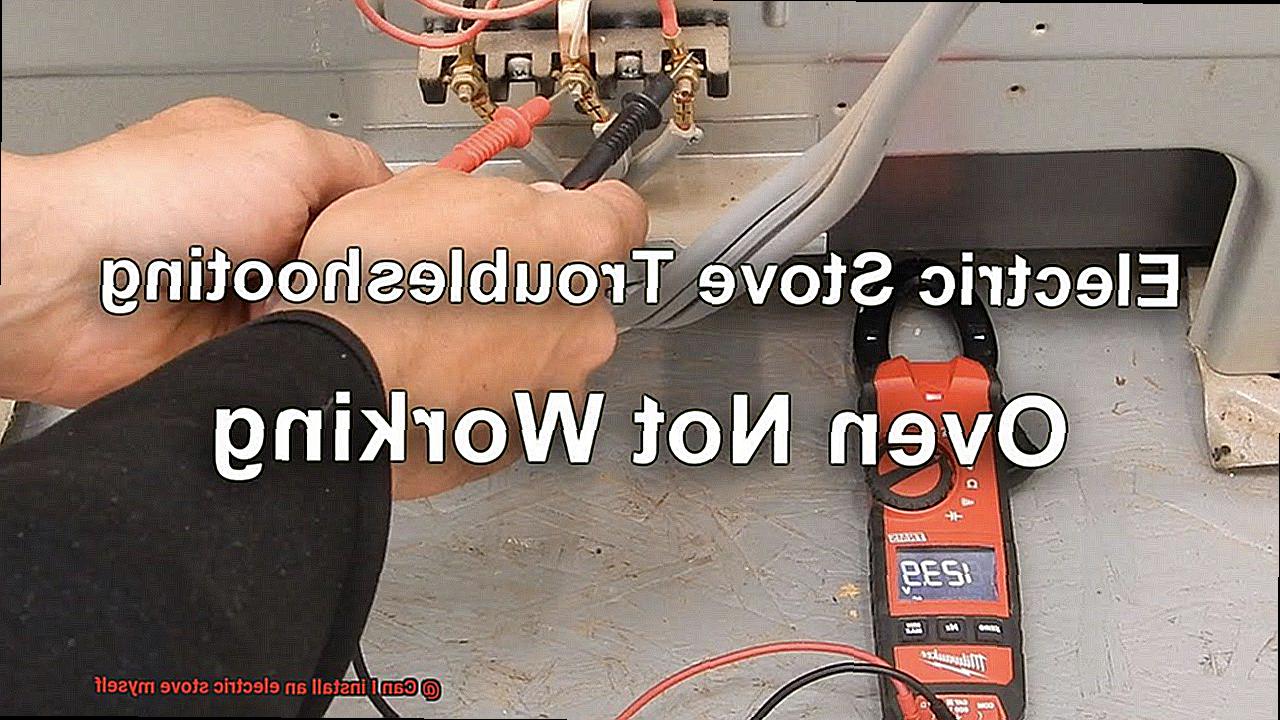
Preparing the Space for the New Stove
Before getting carried away with cooking up a storm, let’s ensure that the space where your new appliance will be placed is properly prepared for a safe and successful installation. As an expert in this field, I’ve compiled a list of essential steps to follow for preparing the space for your new electric stove.
Step One: Clear and Clean the Area
The first step is to clear the area where your new stove will be placed. Remove any old appliances or furniture that may be in the way and clean the area thoroughly. This ensures that you have a safe and clean environment to work in. Plus, it’ll give you a chance to declutter and create more space in your kitchen.
Step Two: Level the Surface
Next, it’s important to ensure that the surface where your new stove will be placed is level. An uneven surface can cause problems with stability, which could potentially lead to accidents or damage to the appliance. Use a level to check that the surface is even and make any necessary adjustments. This will not only ensure safety but also help prevent any spills or messes from occurring while cooking.
Step Three: Check Electrical Requirements
Electric stoves typically require a dedicated circuit with specific voltage and amperage ratings. It’s crucial to consult your stove’s manual or manufacturer’s website to determine the specific electrical requirements for your model. A professional electrician can help you ensure that all safety procedures are followed and that the stove is installed correctly.
Step Four: Double-check Safety
Before turning on your new stove, double-check that all safety measures are in place. Make sure that there are no flammable materials or objects near the stove, such as curtains or paper towels. Also, ensure that there is proper ventilation in the area to prevent carbon monoxide build-up.
Connecting the Wires to the Electrical System
While it’s best to hire a licensed electrician, you can do it yourself if you have some electrical knowledge and experience. Just make sure you follow local regulations.
First things first, before starting any electrical work, turn off the power supply to the area where you’ll be working. Locate the circuit breaker responsible for providing electricity to your stove’s outlet and switch it off. Then, test the outlet with a voltage tester to ensure there’s no live electricity running through it.
With the power off, remove the cover plate from the outlet box and pull out the wires. The wires should be color-coded; black is usually for hot, white is for neutral, and green or bare is for ground. To connect them correctly, attach the black wire to the brass screw on the outlet, white wire to silver screw and green or bare wire to green screw.
If your stove has a four-prong plug that includes a ground wire, you’ll need to connect it to a separate ground wire that runs back to your electrical panel. This is mandatory in most modern building codes. Ensure that a licensed electrician checks your work before turning on any power.
Testing Out Your New Electric Stove
Before you start whipping up a storm in the kitchen, it’s important to test out your new appliance. This simple step can save you from future headaches and ensure that your stove is functioning properly.
To begin testing your new electric stove, gather all the necessary tools and equipment, including a power cord, level, and screwdriver. Once you have everything you need, plug in your stove to an electrical outlet and turn on each burner. Check if they heat up evenly and to their full capacity. Don’t forget to test the oven too. Set it to your desired temperature and see if it heats up accordingly.
If you encounter any issues during testing, such as a burner not heating up or the oven not reaching the desired temperature, don’t panic. Contact the manufacturer or a licensed electrician for assistance. It’s important to never attempt to fix any issues yourself as this can be dangerous and may cause further damage to your new stove.
Once you’ve successfully tested your new electric stove and addressed any issues that may have arisen during testing, you’re ready to proceed with installation. However, if you’re not confident in your installation skills, it’s best to seek professional assistance. It’s always better to be safe than sorry.
Seeking Professional Help for Installation
While it may be tempting to save a few dollars by installing it yourself, it’s important to remember the potential risks involved. Electricity can be dangerous, and improper installation can result in damage, fire, or even injury. That’s why seeking professional help for installation is crucial.
Here are some reasons why you should consider hiring a professional electrician for your electric stove installation:
Safety First: Professional electricians are trained and certified to handle electrical installations safely and efficiently. They have the necessary tools and expertise to ensure that your stove is installed according to code and regulations, minimizing the risk of accidents or injuries.
Avoid Electrical Damage: A poorly installed stove can cause electrical damage that can be costly to repair. Worse yet, it can increase the risk of fire hazards. By hiring a professional, you can avoid these risks and ensure your stove is installed correctly the first time around.
Warranty Compliance: Some manufacturers require professional installation in order to maintain the warranty on your stove. By attempting to install it yourself, you may void the warranty and be responsible for any repairs or damages that may occur.
Save Time and Money: Although hiring a professional may seem like an added expense, it can actually save you time and money in the long run. A professional electrician will get the job done quickly and efficiently, saving you from potential headaches and safety hazards down the line.
H2hhlU2TTV4″ >
Conclusion
In summary, installing an electric stove can be a thrilling DIY project if you have the expertise and knowledge. However, it is crucial to adhere to the manufacturer’s instructions and local regulations before commencing the installation process. Electricity is dangerous, so safety should be your top priority; ensure that you turn off the power supply and double-check all connections.
When installing an electric stove, there are several factors to consider, such as your home’s electrical system, the location of the stove, appliance weight, and local building codes. Adequate preparation of the installation area is crucial for a successful and safe installation.
After completing your installation, testing your new electric stove is essential to ensure everything works correctly. If you encounter any issues during testing or installation, it’s best to seek professional help from a licensed electrician.
While it may seem like a cost-effective option to install your stove yourself, hiring a professional can save you both time and money in the long run. They have extensive knowledge of safety measures and can guarantee that your stove is installed according to code and regulations.
If you’re ready for an upgrade in your kitchen with a brand-new electric stove, make sure you do thorough research beforehand and consider seeking professional help for installation.

